| |
James Webb Space Telescope
12/25/2021. Merry Christmas and Happy Birthday Isaac Newton! I got up early to watch the JWST launch from French Guiana, enjoyed a happy Christmas with Amy, and then used JPL's Horizons utility to find where in the sky the telescope could be found enroute to L2. Fortunately, the answer was a picturesque and easily navigated area.
Have a look. (You can click to make it bigger, but it won't help.)
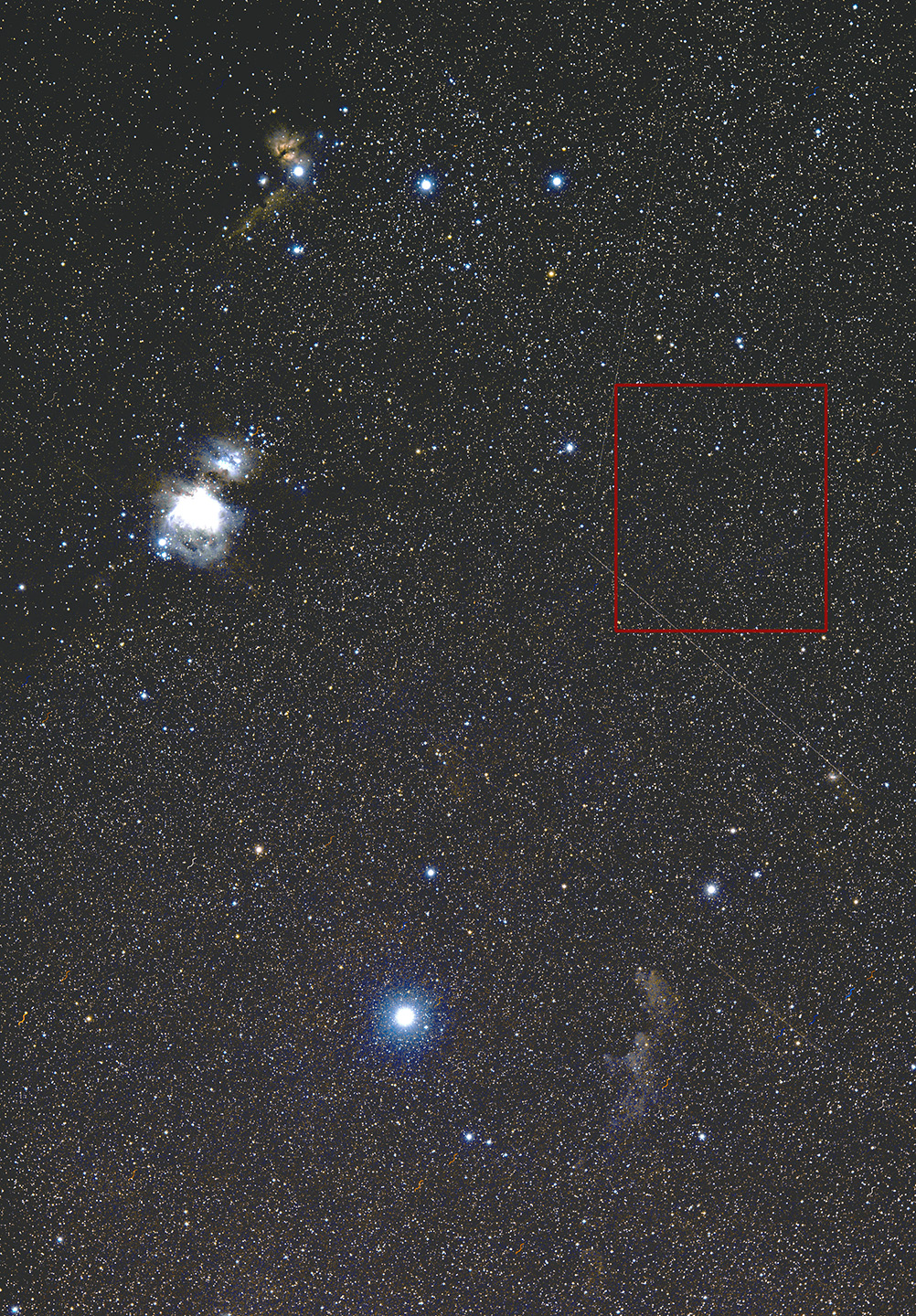
Within that red box is the JWST and the upper stage of the rocket that launched it. Scroll down for a closer look. The bright diagonal streaks are from geosynchs about 25,000 miles above the equator that provide your satellite TV signal and a host of other services. When I made this photo, the JWST was about four times that far out, almost halfway to the Moon's orbit (when I started, it was 98,000 miles out, and when I closed up shop it was 107,000). I put the 105mm Sigma and Canon R6 on an equatorial mount and had the camera take 15 second exposures at ISO 1,600 for a couple of hours starting about 11 PM on Christmas day. This photo is built from 52 relatively cloud-free frames centered on 05:45 12/26 UT. By then I had stopped the lens down to F2.0 as a concession to the just-risen gibbous Moon. Ignore the squiggly lines you might find here and there. They're hot pixels in the sensor; I haven't calibrated the images with a dark image or flat field yet.
Here's a look at the boxed area at 100% of original resolution:
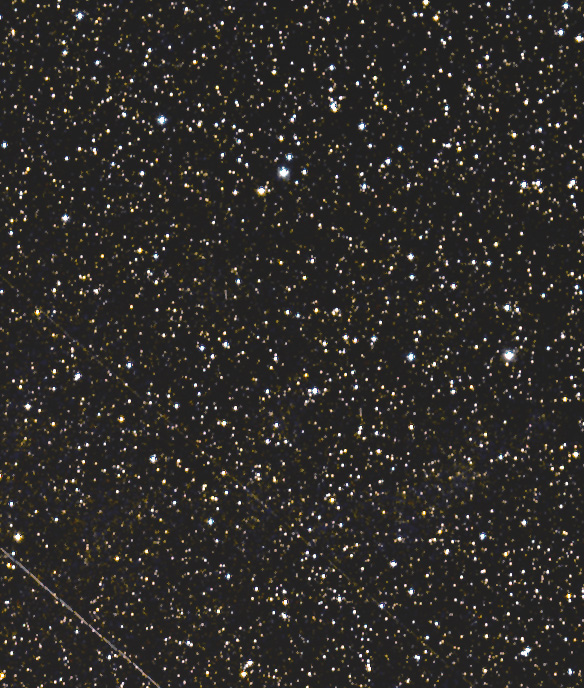
You don't see it? Here, the streak marked on the left is the James Webb Space Telescope. The other streak is the upper rocket stage.
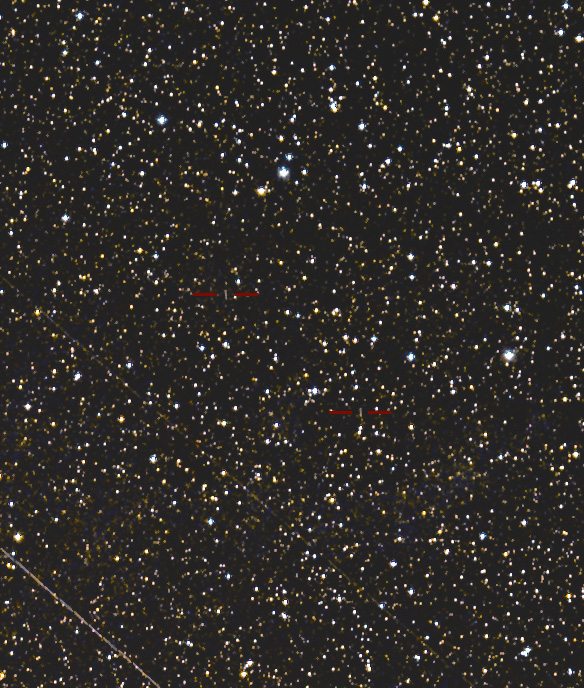
I'm of two minds whether this is the brightest it will ever be: it's much closer than it will be once it arrives at L2, but the huge sunshield is not yet deployed. I haven't been able to measure these images very well, but it looks to be around 13th - 14th magnitude using flux measures in MaximDL and taking Guidestar catalog values as baselines. In other words, that's a kinda over-quantified best guess. It's faint. Paul Sventek and I bounced ideas and links around about the JWST's eventual appearance, but the satellite-watching community (there is one) seems to acknowledge that we'll all just have to wait to see exactly how (in)visible it will be on station.
Back to refining images with me. It's a mite tricky: all my well-practiced techniques are built around removing satellite trails from deep-sky photos. Managing to keep them without also building up intolerable noise is the project of the day.
Space is a busy place. Here's a taller stack of 186 15-second exposures, arranged as above but instead of averaging, I've simply accepted the brightest pixel in each frame (subject to wide stdev limits to knock down some noise) hence brighter satellite trails. You can see just how busy the geosynchronous belt is. The widefield is again followed by two cropped images, first unmarked and then with the JWST (left) and its booster circled:
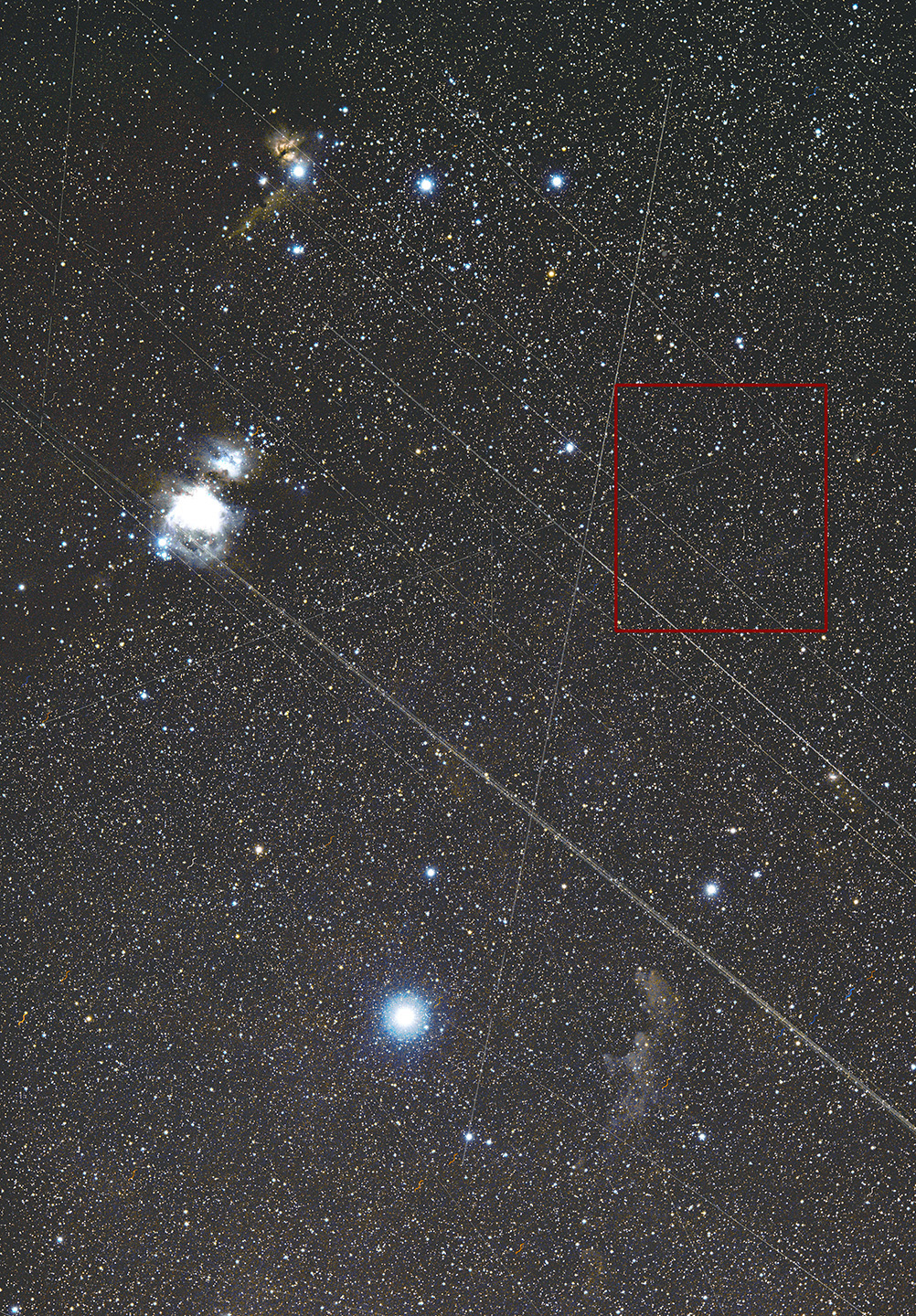
Yeah, you can click this one to make it bigger.
But it probably still won't help you find the telescope.
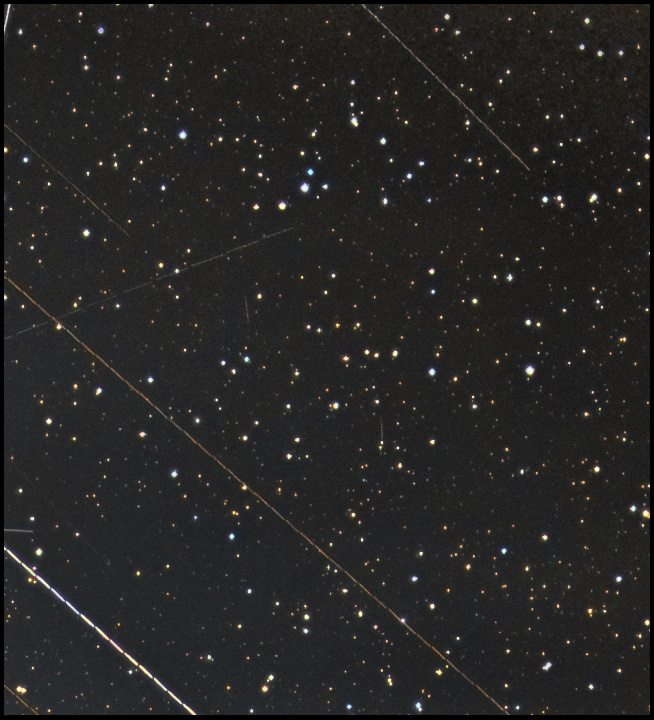
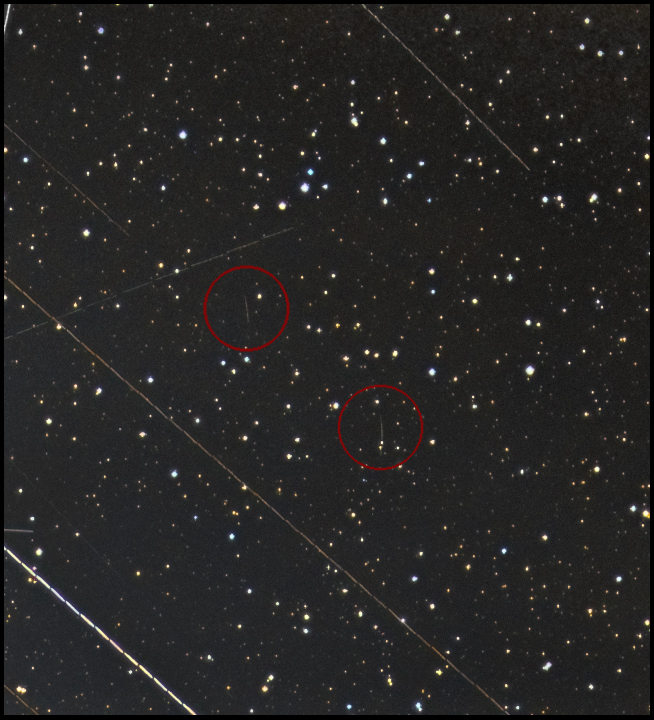
To use the JPL's Horizons System, visit
https://ssd.jpl.nasa.gov/horizons/app.html#/
and for "target body" enter "JWST". Happy hunting!
:: top ::
My deep-sky photos are made with a variety of sensors and optics. Deepest images come now from a ZWO ASI1600MM Cooled Pro CMOS camera, an ASIair (model 1) and sometimes one of several laptops. A good many images come from an unmodded Canon 6D but a lot more will be coming from an R6. Video and video extracts begin in a Canon EOS M, usually running in crop mode via Magic Lantern firmware (but the 6D and especially the R6 will probably see more use). Telescopes include an AT10RC, an Orion 10" F4 Newtonian, and a pair of apochromats: a TMB92SS and a AT65EDQ. A very early Astro-Physics 5" F6 gets some use, too. So do lots of camera lenses on both the ASI1600 and on the Canons. A solar Frankenscope made using a 90mm F10 Orion achromat and the etalon, relay optics, and focuser from a Lunt 60 feeding a small ZWO camera will see more action as the Sun comes back to life (Autostakkart!3 is my current fav for image stacking). Mounts include an iOpton SkyTracker (original model), a bargain LXD-55, a Losmandy G11 (492 Digital Drive), and an Astro-Physics Mach1. PixInsight does most of the heavy lifting; Photoshop polishes. Some of the toys are more or less permanently based in New Mexico. I desperately hope to get back soon.
|